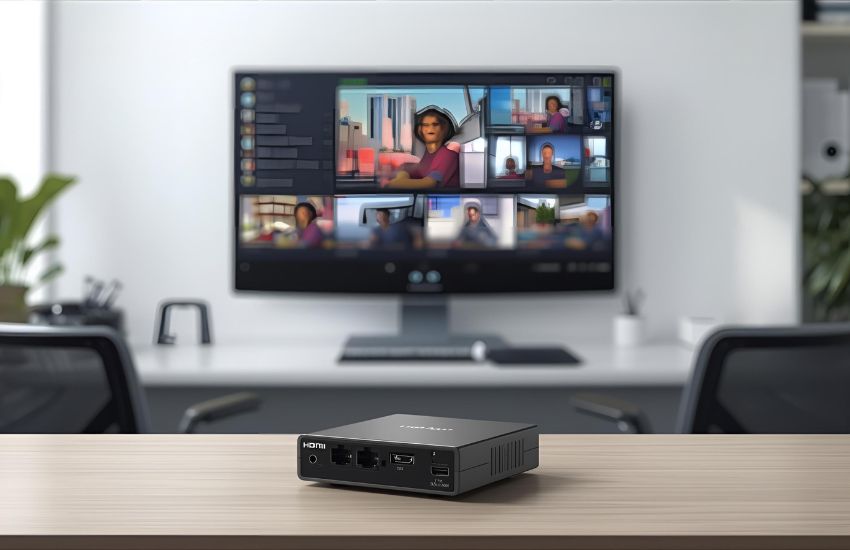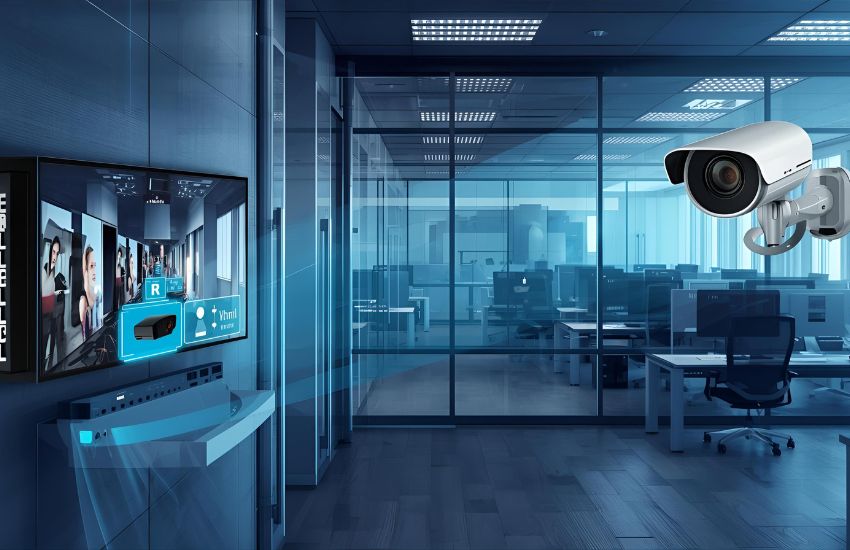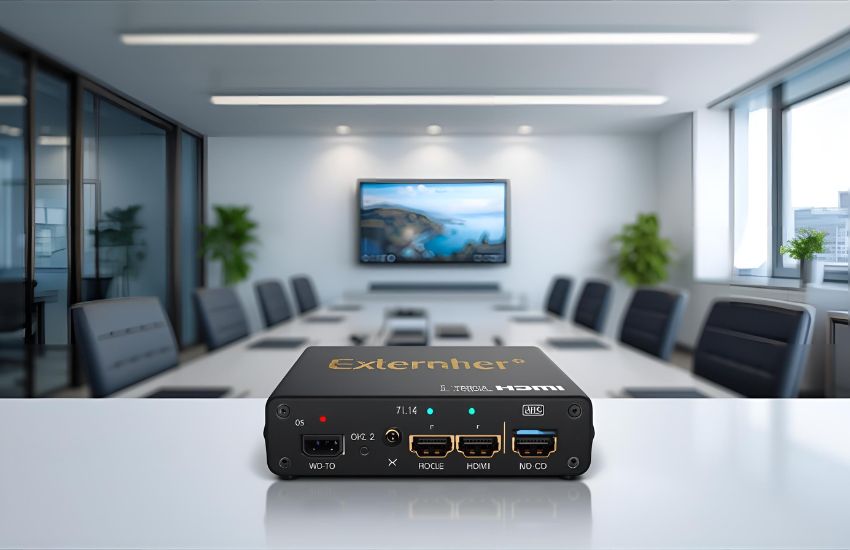What if a single, affordable upgrade could drastically enhance the way your surveillance system performs? For professionals dedicated to security and reliability, the right HDMI over Ethernet solution is more than just a convenience—it’s a necessity. Whether you’re managing multiple displays, ensuring uninterrupted HD video feeds, or reducing clutter in your control room, choosing the right setup matters.
An HDMI over Ethernet extender significantly boosts your surveillance setup by enabling seamless HD video transmission over long distances using a single cable. This reliable solution supports USB 2.0 and ensures clear, high-quality video without signal loss. With one HDMI extender over Ethernet, you enhance your system’s efficiency and flexibility for modern surveillance needs.
In this blog, you’ll learn how HDMI over Ethernet extenders work, why they’re ideal for modern surveillance environments, and what to look for in products—from cable types to extender features—that ensure seamless HD video transmission.
Why HDMI Over Ethernet Extender Solutions Are Ideal for Modern Surveillance Setups

When managing a modern surveillance system, one of your top priorities is to ensure reliable, high-quality video transmission across various locations. This is where a HDMI over Ethernet extender becomes essential. It not only simplifies complex wiring but also extends HDMI signals efficiently across long distances, without degrading video quality.
Extend HDMI Signals Without Compromising Quality
A HDMI over Ethernet extender allows you to send video and audio signals from your HDMI source to a display over a single Cat6 cable. This technology extends HDMI over larger areas—such as office buildings, warehouses, or security command centers—while maintaining the fidelity required for effective monitoring. Whether you’re transmitting 4K video or standard full HD, this solution delivers exceptional clarity without latency.
Enable Seamless Remote Monitoring
In surveillance environments, devices like DVRs or NVRs are often placed in a remote location. With a HDMI over Ethernet extender, you can view live feeds on distant screens without needing long HDMI cables. Add-ons like IR control allow you to operate equipment from afar using an IR remote, ensuring both flexibility and convenience.
Simplify Integration with USB and IP Networks
Many extenders support USB over Ethernet, which means you can integrate KVM functions—allowing you to control your systems using a single keyboard, video, and mouse interface. In larger setups, options like HDMI over IP and extender over IP enable easy scaling through a network switch or Ethernet switch, making your entire IP network more adaptive and centralized.
Ideal for Scalable and Professional Setups
Whether you’re connecting to a projector, additional monitors, or using an HDMI over Ethernet extender kit, the streamlined configuration is designed for efficiency. You eliminate the mess of multiple cables while maintaining a secure and stable ethernet network. For enterprise-level reliability, some models are HDCP compliant and support gigabit Ethernet speeds for uninterrupted HDMI video transmission.
See more about…HD CCTV Security Cameras are NOT Better than Network IP Cameras
How a Single Ethernet Cable Can Extend HDMI Signal Without Compromising Performance

Using a single Ethernet cable to extend your HDMI signal offers a streamlined, efficient way to transmit high-quality audio and video signals over significant distances, often up to 100 meters. Unlike traditional setups that rely on bulky standard HDMI cables limited to shorter runs, this approach leverages the way Ethernet works—sending digital data reliably over network infrastructure. When you use a powered HDMI system comprising a transmitter and a receiver, the HDMI signal is converted to travel through a single Cat5e or Cat6 cable, ensuring you maintain crisp 1080p video and clear audio without degradation.
This method simplifies installation by reducing cable clutter and allows flexible placement of your local display, whether it’s a monitor or projector. Moreover, integrating an unmanaged Ethernet switch can expand your setup, enabling multiple endpoints without complicated configurations. The system supports advanced features like IR remote control, so you can operate your source device remotely, maintaining full control over your video content.
For more extensive deployments, AV over IP or an IP solution may be used to transmit HDMI signals across a broader network, optimizing performance while preserving signal integrity. Additionally, some systems include an HDMI loop-out port, allowing you to connect a local monitor directly at the source, ensuring you can monitor your feed onsite without additional equipment. With this approach, you achieve a professional, scalable, and high-performance video transmission system that meets modern surveillance and AV needs without compromising on quality.
See more about...360 Degree Surveillance Camera
Choosing the Right HDMI Over Ethernet Products for Seamless IR Control and Video Transmission

Selecting the appropriate HDMI over Ethernet products is critical to achieving stable, high-performance video transmission in your surveillance or AV setup. With numerous options available, understanding key features and compatibility requirements will help you create a reliable system that meets both technical and operational needs.
Match the Product to Your Source Device and Display Requirements
Start by identifying the source device—such as a DVR, media server, or computer—and ensuring it offers a compatible HDMI output. The chosen extender must support the resolution and signal integrity required by your display. For full HD transmission, opt for products that support 1080p 60Hz to guarantee smooth video playback. Pay close attention to supported formats for video and audio, especially if you’re transmitting both simultaneously over long distances.
Use Ethernet to Extend High-Quality Video and IR Control
If you’re using Ethernet to distribute video, consider products that support IR control, allowing you to manage the source device remotely. This is especially beneficial in security applications where equipment is installed in inaccessible areas. A Cat6 Ethernet cable provides the necessary bandwidth and shielding to transmit video quality signals effectively, ensuring minimal interference or degradation. Look for solutions that also enable seamless control over audio and video functions through remote commands.
Choose Scalable Solutions for Advanced Installations
For larger systems, such as digital signage setups or a video wall, opt for modular HDMI over Ethernet solutions. Features like dip switch configurations or compatibility with an IP kit can support multi-display outputs and flexible routing. If your installation spans multiple rooms or floors, choosing units compatible with a Gigabit Ethernet network ensures consistent signal flow without lag. Some advanced kits even support HDMI to Cat6 and Cat6 to HDMI conversions for simplified cabling in complex environments.
See more about…License Plate Reader Cameras
Conclusion
Using a single cable to transmit both video and data offers a streamlined and efficient solution for modern surveillance and AV setups. An HDMI extender over Ethernet not only supports video transmission with high quality but also offers HDMI connectivity alongside USB 2.0 capabilities, allowing you to control devices remotely and simplify your wiring needs. By relying on one HDMI source and a single Ethernet cable, this technology enables you to send video signals reliably over long distances without compromising performance. Moreover, many systems come with an extender that includes both the transmitter and receiver, making installation straightforward and hassle-free. Ultimately, choosing the right extender provides you with a scalable, professional-grade solution that enhances your surveillance infrastructure while maintaining clean, manageable cabling.
See more about..Live CCTV Camera TV Display
Frequently Asked Questions (Boost Your Surveillance Setup with a Reliable HDMI Over Ethernet Extender for Seamless HD Video Transmission)
What is the purpose of HDMI over Ethernet?
The purpose of HDMI over Ethernet is to extend high-definition video and audio signals over long distances using standard Ethernet cables instead of traditional HDMI cables. This technology allows seamless transmission between devices, supports multiple displays, reduces cable clutter, and is cost-effective for home theaters, digital signage, and professional AV installations requiring long cable runs.
Do HDMI Ethernet extenders work?
Yes, HDMI Ethernet extenders work effectively by transmitting high-definition audio and video signals over long distances using standard Ethernet cables. They are especially useful when HDMI cables cannot cover the required range. These extenders maintain signal quality, support HD formats, and are widely used in homes, offices, and commercial setups for reliable, long-distance HDMI connectivity.
How far can HDMI be transmitted over Ethernet?
HDMI can be transmitted over Ethernet using HDMI extenders, which convert the signal to travel over Cat5e or Cat6 cables. Depending on the quality of the extender and cable, HDMI can typically be transmitted up to 50 meters (164 feet) at 1080p resolution, and up to 100 meters (328 feet) for lower resolutions.
Do you lose quality with an HDMI extender?
Yes, using an HDMI extender can sometimes cause a slight loss in signal quality, especially over long distances or with low-quality cables. High-quality extenders, however, maintain full HD or even 4K resolution without noticeable degradation. To minimize quality loss, it is important to use good cables, reliable extenders, and stay within recommended distance limits.
